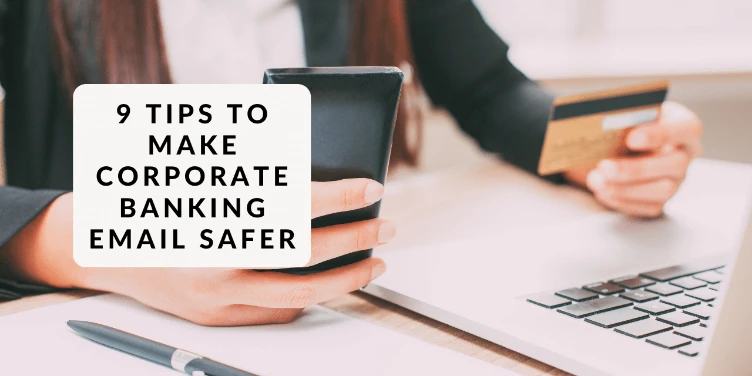It’s 2021, and the corporate sector is yet another area that is embracing digitalization to develop and improve their services. At this point, a bank that hasn’t digitized, has fallen behind. Where paper was traditionally used for things like transfers and loans, this has now all moved online.
While this makes banking easier, there is a danger lurking that we can’t afford to ignore/neglect. Banks and other financial organizations have sensitive customer information, which makes them valuable targets of cyber-attacks. Two years ago, it was reported most data leaks came from the financial sector (30%).
That is why it is crucial for financial services to know how to improve their data security when doing corporate banking. In this blog we share 9 tips with you.
Do you know what is going on in this sector regarding email security and secure communication? And perhaps more importantly: does your organization currently have the right security to prevent a data breach? Take a look here: Secure emailing in the financial sector
9 tips to make corporate banking email safer
1. Be proactive and never trust an email directly
No matter how reliable an email may look or how good you think you are at spotting a potential cyber-attack, you should avoid becoming lax. If you do not take the time to check whether the email is correct, you run the risk of causing a data leak which can have even more severe consequences.
It is important to always be critical and if you find yourself to be in doubt contact the sender for confirmation. By not taking everything to always be true or correct, and instead check emails just to be sure, you’ve already taken a big step in preventing data leaks.
2. Use Multi-Factor Authentication (MFA)
At times, the standard protection of emails is not secure enough to prevent sensitive information from falling into the wrong hands. Multi-Factor Authentication - or MFA - is a way to add extra security to your emails.
With MFA, a recipient must authenticate with multiple factors to access the message. Consider, for example, a password and access code per SMS.
By using MFA you can be sure that your email can only be read by the person it is actually intended for.
3. Consider the human factor
Mistakes are human and we all make them from time to time. Thus, it’s no surprise that human errors are the main cause of data leaks.
Because of this, it is vital that your organization works with simple and user-friendly systems that reduce the chance of human errors. With a simple program that requires little explanation, the number of human errors will decrease and with it the number of data leaks.
4. Awareness training
How can you prevent something you don't know or understand? Forewarned is forearmed, and awareness training can therefore be useful.
Employees are informed about the causes of data leaks and how important it is to prevent them. In this way they will be more aware of the processing of sensitive information and the importance behind doing this in the most secure way possible.
5. Artificial Intelligence (AI) & Machine Learning
At a time when technology is constantly evolving, it is also important for the financial sector to use these technologies to their advantage. AI and Machine Learning provide an extra layer of protection, which reduces the risk of a data breach. ()
These techniques can detect possible gaps in your data security both before and during emailing. This can help with data protection through additional verifications and identity checks.
6. Security audit
Are you curious about how vulnerable your company is to data leaks? Then security audits, such as penetration tests, can be important and valuable to your organization. This allows you to investigate how strong your data security is and you can identify holes in your security.
During these tests, a cyber-attack is simulated to discover how easy it is to get your data. By doing this you know how sensitive your company is to real attacks.
7. Choose a secure email solution with zero-knowledge end-to-end encryption
Not all solutions understand the conditions for secure mailing. That's why it's important to use a program with zero-knowledge end-to-end encryption. This way your data is encrypted, and no one has access to it. Only the sender and the authenticated recipient.
When you send a message, the content is encrypted. Only the recipient can read it, because they have the correct key. Because all important information is encrypted, it is unreadable for other parties. This reduces the risk of data leaks.
8. Strong passwords
A data breach caused by passwords still occurs. That's why we can't say it often enough: a weak password is a sensitive password.
Make sure your password consists of different character combinations, avoid predictable information such as birthdays and never reuse them. If you adhere to these rules, your passwords are no longer vulnerable to cyber-attacks.
9. Set a retention period
When an email is sent, the information is visible for a long time. You can prevent this by setting a retention period. After this set period, the recipient can no longer read the e-mail.
In this way, the mail is only temporarily available, which can be desirable when exchanging highly sensitive information.
An accident can happen at any given time, and that is why it is useful to have systems that take this into account. Smartlockr is happy to help keep your organization’s communication and data secure.

